Factors influencing the overall cost of implementing an EHR
-
1. EHR implementation approach
When it comes to EHR adoption, healthcare practices can go one of two ways: integrate an existing third-party EHR solution or build a custom EHR system from scratch. The price difference between the two approaches is substantial, with integration being significantly less expensive. According to Evgeny Dubovik, our presales engineer, the cost of integrating an off-the-shelf EHR solution starts at around $200,000 for basic implementation with minimal customization and can reach $2,000,000 when additional features are included—such as custom mobile applications for patients and physicians, telehealth capabilities, advanced data analytics, and integration with other healthcare systems or third-party services.
As for custom development, building an EHR system from scratch is a high-cost and time-consuming endeavor. It can take several years and cost between $5,000,000 and over $50,000,000, depending on the system’s complexity and features. Among the cost drivers are:
-
Software development costs
Building an EHR requires hiring software developers, UI/UX designers, data security experts, and compliance specialists.
-
Regulatory compliance
EHR systems must adhere to strict regulations such as HIPAA in the U.S. Ensuring compliance requires legal and technical expertise, increasing costs significantly.
-
Infrastructure and hosting
A custom-built EHR needs secure data storage, high-availability servers, and robust cybersecurity measures, all of which add to the expense.
-
Testing and quality assurance
Extensive testing is necessary to ensure that the system functions reliably and securely, further extending development time and costs.
-
Long-term maintenance and upgrades
Unlike integrated solutions, a custom EHR requires continuous investment in updates, security patches, and feature enhancements.
-
Software development costs
-
2. The type of EHR deployment
Software expenses vary depending on whether you choose an on-site or web-based EHR solution. While the former typically requires significant hardware investment plus ongoing maintenance fees, the latter, known as software as a service (SaaS), has monthly or yearly subscription fees. Installing hardware typically costs between $20,000 and $200,000. Subscription costs vary by vendor, feature set, and number of users, ranging from $100 to $600 per user or $1,000 to $10,000 per facility per month.
Here is a comparison table of the most adopted EHRs across the globe, highlighting their key features and prices:
| Feature set | Pricing | |
|---|---|---|
| Epic |
|
|
| Athenahealth |
|
|
| eClinicalWorks |
|
|
| Oracle Health |
|
|
-
3. The size of healthcare facility and the number of users
To support large patient records and real-time data processing, larger hospitals require more comprehensive systems with a broader range of capabilities, better data analytics, and increased storage capacity. Larger healthcare providers may also require integration with numerous specialist departments, which adds to the complexity. Small hospitals, on the other hand, may have cheaper initial costs because they require a simpler system with fewer users and less storage. But they still need to think about scalability to make sure the EHR system can grow with their business, which could cost more in the long run.
Furthermore, in most cases, licensing rates are determined by the number of users who access the system. Larger medical institutions often require a larger number of licenses, which results in an increase in the overall expenses.
-
4. Customization needs
Every medical institution requires a unique level of customization for an EHR system to align with its specific operational requirements. For example, healthcare providers may need a telehealth solution for virtual care, a custom form builder, a bespoke billing system, or a patient portal, each coming with a price tag. The cost can range anywhere from $50,000 to $500,000, depending on the number of features and integrations that are included.
-
5. Integration needs
Costs can change a lot depending on how hard it is to connect an EHR system to other healthcare tools and third-party apps. Billing systems, laboratory information management systems, imaging software, and drug management apps are just a few of the digital tools that many healthcare facilities use. For the best workflow productivity, all of these systems need to be easily connected to the EHR. To achieve this level of interoperability, custom-built application programming interfaces (APIs), extensive testing, and data standardization efforts are required. Furthermore, interoperability standards, such as HL7 or FHIR, must be established to enable communication between disparate systems, incurring additional expenditures.
-
6. Training
EHR implementation is more than just a technological transformation. Updating the staff’s expertise is inevitable when a new system is introduced. Clinicians, administrative employees, and IT teams—all require specialized training tailored to the roles. The costs associated with training also vary depending on the size of a practice, the system’s complexity, the number of new features, and the very training approach. As for the latter, the options range from on-site sessions led by vendors to self-paced e-learning modules and a train-the-trainer model where key staff educate their peers.
The cost of EHR systems: examples from the ITRex portfolio
With 16+ years of experience in custom healthcare software development, ITRex has delivered its EHR implementation and integration services to a large number of healthcare organizations worldwide. Here are some of the projects from our portfolio.
Project 1: EHR & EMR integration for a mental health portal
Our customer, a mental health portal provider, was seeking healthcare software development services in order to improve their platform by integrating electronic health records (EHR) and electronic medical records (EMR) systems. They aimed to allow psychologists, counselors, and psychiatrists to securely access and manage extensive patient information, such as previous appointments, prescribed treatments, and behavioral data.
ITRex suggested Redox as the main integration technology to handle healthcare data interoperability, enabling smooth data transfer between various healthcare IT systems. Based on the system requirements, our team set up Redox APIs to aggregate medical histories, patient records, and facility locations. The ITRex team also designed an easy-to-use physician portal for effective data management and information retrieval. Both clinical efficiency and patient care were improved as a result of the effective implementation of the solution at mental health clinics located all over the United States.
Cost: $250k
Duration: 6 months
Project 2: Automated scheduling system for medical appointments
Our customer required an automated solution to synchronize appointment scheduling between the booking service and eClinicalWorks (eCW), the most popular EMR platform among physicians. The problem arose from unsynchronized EMRs, which required clinicians to manually enter schedule data across several systems, wasting time and increasing the chance of errors.
To address this issue, we created an automation system powered by RPA that synchronizes appointment data between eCW and the booking service with ease. The solution included a Python-based dynamic queue for script execution, the web scraping tool for extracting data from the eCW website, and an integration with the eCW desktop app to fetch timetable data. We decided on the RPA solution as the most straightforward and cost-effective approach to solving the challenge. It enables seamless interaction with the eCW system without having to modify its source code or pay fees for API access.
The system no longer requires human data entry and minimizes double bookings by enabling real-time, error-free synchronization.
Cost: $100k
Duration: 3 months
Project 3: An AI-powered healthcare solution for proactive, personalized post-acute patient care
The client, a leader in transitional care, was looking for top expertise in EHR integration and AI technologies to create a transitional care app with AI-powered recommendations that would reduce unnecessary hospital visits for patients after discharge. Our team developed a HIPAA-compliant healthcare solution that seamlessly integrates with EHR and EMR systems and call-center software. The solution enables AI-assisted personalized recovery plans, a web-based booking flow for scheduling video consultations, and real-time patient data synchronization with EHRs. It also allows for entering personal information and phone verification to see if a patient’s record exists in an EMR system, transferring patient health information into an EMR system upon submission, and creating patient profiles in this system automatically.
As a result, the EHR-integrated solution has reduced hospital readmissions by 67% and achieved an exceptional NPS of 94. By making it easy for data to be shared, the app improves care coordination, lowers healthcare costs, and makes administration easier while still following all HIPAA rules.
Cost: $280k
Duration: 6 months
Tips to optimize the cost of implementing an EHR solution
-
Choose the right EHR
When selecting the right EHR system, it’s vital to consider the following factors:
-
Deployment. We recommend leveraging off-the-shelf cloud-based solutions that come with prebuilt integrations as the most cost-effective option for small to mid-sized practices. The advantage is that they have lower upfront costs and automatic updates, which substantially reduces hardware and maintenance expenses as opposed to on-premise solutions.
-
Scalability. Opting for a scalable EHR solution that can expand as your practice grows is more cost-efficient than selecting a fully-featured system from the get-go. This approach allows you to pay for functionality your organization currently needs rather than wasting money on could-have, low-priority features that may not justify their cost in the long run.
-
Pricing model. A subscription-based payment model is more preferable than, for example, a one-time licensing fee, as it allows you to pay only for the number of users or modules you currently need.
-
Interoperability. Our advice is to select an interoperable EHR that seamlessly integrates with current EMRs, billing systems, labs, and other third-party apps. It helps minimize integration costs and avoid custom development expenses. Be sure you opt for solutions compliant with HL7 and FHIR R4 standards.
-
-
Focus on essential features
Overloading the system with features your practice doesn’t truly require leads to unnecessary expenses, let alone increased complexity and expensive future customizations. To avoid this, you need to define core requirements and decide on appropriate features that meet them, keeping away from so appealing yet resource-draining “nice-to-have” functionalities. Among the most common features that are mission-critical for daily workflows are appointment scheduling, e-prescriptions, interoperability, patient record management, and billing. It’s also a good idea to involve clinicians, admin staff, and IT teams in the feature selection process so that you can get a big-picture view of what your end users need in the first place.
-
Collaborate with an experienced vendor
When it comes to cost-saving measures, it’s important to understand that there is no one-size-fits-all solution. Cost-saving strategies vary case by case based on a large number of factors. To choose the right one, we recommend turning to an established healthcare software development company with a proven track record of EHR implementations. Here, at ITRex, we can help you work out the most optimal EHR implementation strategy that will cut down the overall project costs and expedite the EHR deployment process.












